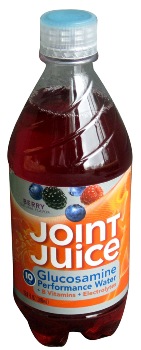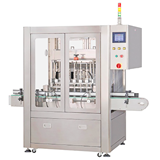While there has been considerable activity in dietary supplements for joint health, the mainstream food and drinks market has seen relatively few developments in this area. The Innova Database (www.innovadatabase.com) records that introductions with a joint health positioning accounted for less than 1.5% of global food and drinks launches on an active health platform in the 12 months to the end of August 2011. This represented just over 0.1% of launches as a whole. Furthermore, the vast majority of this activity was in pet foods, which accounted for over 85% of total joint health launches.
If pet foods are excluded, beverages, including both soft drinks and hot drinks, accounted for almost all of the launch activity. According to Innova, the USA has seen by far the highest levels of activity in this area, particularly for soft drinks, although many still take a hybrid-type positioning as supplement-style products. Joint Juice is one of the earliest examples of this, having become the first ready-to-drink glucosamine supplement in 2001. It contains glucosamine, chondroitin, vitamins D and C and green tea extracts. The original drink was extended with a Fitness Water, later relaunched as a Performance Water, and, more recently, with a dose-delivery shot variant.
A rival brand arrived in 2007 with Elations Healthier Joints liquid supplement containing glucosamine, chondroitin, calcium in CCM (calcium citrate malate) form and boron. The Osteo Bi-Flex brand of supplements also has a liquid Joint Aid product on the market, and the Assure range of juice drinks was extended in March 2011 with a Peach Mango drink for women containing calcium for bones and glucosamine for bone and joint health.
A review of joint health product launches on the Innova Database shows that, apart from glucosamine, other ingredients positioned for their joint health benefits include collagen and a whole raft of botanicals. Collagen was first used in Japan in the mid 1990s for products with a joint health positioning, as well as for skincare lines, but a recent European Safety Authority (EFSA) rejection of an EU health claim submission seeking to link collagen consumption and joint health may prevent its use spreading into new markets. Meanwhile, natural, traditional and herbal remedies continue to be marketed in different countries, although often only via specialist outlets and in many cases supported by largely anecdotal evidence.
In the hot drinks market, Innova Market Insights records that herbal teas have also seen some activity in this area, with a number of arthritis teas available, including the TooTeaz Arthritis Blend launched in Australia in 2010 containing alfalfa, meadow sweet, nettle, celery seed, devil’s claw, ginger, silver birch and jasmine. Nearby, in New Zealand, the long-promoted health benefits of Manuka honey resulted in the launch of Nelson Honey’s Nectar Ease Plus Special Manuka Honey with bee venom and glucosamine. South Africa has also seen a number of joint health herbal lines launched on the market, with 2011 introductions including Herbal Power Arthritis Tea, Cayenne Pepper, and Black Sesame Strips.
While there has been ongoing, if fragmented, activity in joint health food and drinks, the joint health market currently remains largely confined to supplements of various kinds, according to Innova Market Insights Research Manager LuAnn Williams. She contends, however, that there appears to be a clear opportunity for this type of product to be developed into the mainstream food and drinks arena, particularly in the light of the growing awareness of the relationship between glucosamine and joint health. Developing convenient products with a good taste profile may perhaps be the key to tempting consumers, particularly in the USA, away from dietary supplements and into joint health food and drinks.
On the local scene, Vic Cherikoff, a co-formulator of Kakadu Complex, a wild food nutritional, says "anti-inflammatory ingredients are rife in the Australian range of functional foods. They include mountain pepper, pepperberries, anise myrtle, Kakadu plums, Illawarra plums and more. It makes sense to also co-formulate joint health ingredients with other support aims, not only for humans but for dogs and cats too. For example, appetite, energy or nutrient absorption enhancers might be targeted since compromised joints can also reduce these stimuli and compound problems. I expect we’ll see increasing emergence of non-therapeutic but still functional products over the next few years."
For further information on the Innova Database, the representative for Australia and New Zealand is Glen Wells ([email protected]).






-160x160-state_article-rel-cat.png)

-160x160-state_article-rel-cat.png)






-160x160-state_article-rel-cat.png)




